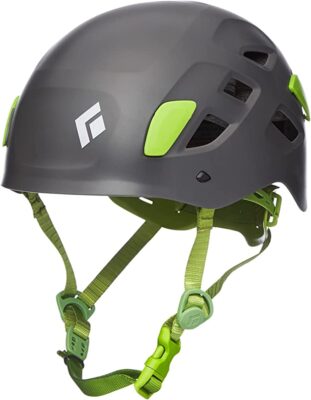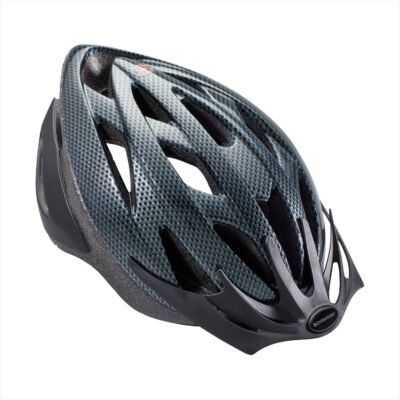Is there a difference between a climbing helmet and a bike helmet? This is a question that most of you may be asking, and here is a detailed answer.
A helmet is a very crucial item for everyone, either riding a bike or climbing a mountain. With this safety gear, you can be sure of head safety in case of any injury from the falling rocks.
Table could not be displayed.However, several people do not understand the type of helmet to wear when climbing or when riding a bike. The climbing helmet is different from a bike helmet since you can use it for different tasks.
We will help you understand clearly between the climbing helmets versus bike helmets. You will also understand their different functions that will make you always have the right helmet for climbing or bike riding.
Table of Contents
Climbing Helmets
A climbing helmet is a piece worn on the head when one is climbing a rock or a mountain. Its main purpose is to protect oneself from any head injuries that may be a result of a falling rock.
For you to enjoy rock climbing to the fullest, you should ensure that a climbing helmet is the first item you should consider having when doing your climbing preparation.
Remember that in case of an accident, a climbing helmet acts as the difference between life and death. Therefore, it is important to select a climbing helmet that will be comfortable and offer maximum protection from climbing dangers. These helmets are available in different brands, types, shapes, sizes, and colors.
Choose the one that fits you well to ensure that it remains in position during the practice. It would help if you also considered your own climbing styles and the climate area before selecting a climbing helmet since they come in different weights plus the ventilation. There are two categories of climbing helmets, namely foam and suspension helmets.
Bike Helmets
A bike helmet is a safety gear worn on the head to protect you from head injuries in case of an accident. The helmet is supposed to fit snugly to your head but not too tight.
You should always wear a bike helmet while on the road or mountain bike riding. They comprise two layers, the polycarbonate layer on the outer side and the inner foam layer.
The outer layer is hard to offer protection to the foam layer. It also lets the helmet slide around your neck, giving you the comfort you need while riding. In case of an accident, the foam layer absorbs most of the impact force hence protecting you from severe head injuries.
Select a bike helmet that perfectly fits your head, offers enough ventilation, and has the correct weight depending on your preference. Best bike helmets can be easily adjusted to give you the best comfort.
Climbing Helmet Vs Bike Helmet: Similarities and Differences

Similarities
Head safety: Both climbing helmets and bike helmets protect your head from injuries in case of an accident. Whether it is a rock-fall or a vehicle collision, the helmet will absorb most of the force and impact protecting your head organs from damage. Both have padded inner surfaces for comfort.
Ventilation: Climbing helmets, as well as bike helmets, have ventilation to allow cool air from circulating your head. Different helmets contain different numbers of vents. Therefore, you should choose one that favors the type of climate that surrounds your area of use.
Differences
There are several differences between a climbing helmet and a bike helmet.
Shell: A bike helmet has a softer shell compared to a climbing helmet that has a tough shell. This is because a climbing helmet protects your head from any hard falling rocks. On the other hand, a bike helmet shell is softer since you can use it on the roads where there are no falling rocks.
Side protection: The sides of bike helmets have a thick bead foam layer. This layer is absent in climbing helmets, although some few brands contain the layer. This is because a cyclist is more likely to get injuries on the head’s sides, unlike a climber who gets over head injuries from the falling rocks. This makes the bike helmets to protect you against side impacts.
Design: Climbing helmets offer multiple protection, unlike bike helmets that are made for solo ground impact. Climbing helmets protect you from numerous small forces, for example, falling rocks. In contrast, bike helmets that feature an Expanded Polystyrene material crush to absorb force in case of a bike accident.
This will protect you from hard ground impacts, and it may result in helmet’s deformation making it less useful for another ride. Bike helmets are therefore non-reusable while climbing helmets are reusable in case of an accident.
Safety standards: Climbing helmets are tested by the EN 12492:2000 plus the UIAA 106 standards that test multiple impacts. On the other hand, bike helmets are tested using the CPSC and the EN 1078 standards. These standards are used to test the protection ability against physical impacts.
Vents: Most of the bike helmets in the market contain wide vents at the top to allow more ventilation during the biking practice. These top vents are absent in the climbing helmets to allow for maximum safety since they could permit falling rocks to hit your head. However, climbing helmets also have vents, but they are narrower. You can find them on the sides rather than at the top. Warm climatic conditions require helmets with more vents than cold climatic conditions.

Final Words
Wearing the right type of helmet is very crucial for your safety. Bike helmets should not be used for climbing rocks or mountains since they will not offer the utmost protection from falling rocks and other objects.
On the other hand, climbing helmets may not protect your head fully in case of a collision. You now know the comparison between climbing helmets versus bike helmets. Use the right type for the right practice.



